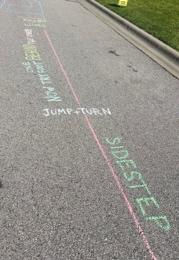Autism Spectrum Disorder, Community Mobility, and Occupational Therapy
- Morgan Grimsley, OTS
- Dec 15, 2019
- 1 min read

Autism Spectrum Disorder (ASD) is a “developmental [disability] characterized by impairments in social interaction and communication and restricted and repetitive interests/behaviors” (Won, Mah, & Kim, 2013, p. 1). As occupational therapists, our main concern is how these impairments and behaviors effect their functional performance in their everyday lives. The symptoms and behaviors often associated with Autism Spectrum Disorder can challenge and individual’s ability to participate independently in Instrumental Activities of Daily Living (IADLs). One IADL that is particularly important to all individuals is community mobility. In their 2012 article, Precin, Otto, Popalzai, & Samuel (2012), study the occupational therapist’s role in training these individuals how to navigate their community. We are able to help them discover the transportation systems that are available to them, teach them how to plan their travel, and how they can execute their travel plans safely (Precin, et al., 2012). In order to do this, the therapist could implement interventions geared toward map reading, time management, safety awareness, money management, emotional regulation, and social/communication skills (Precin, et al., 2012). Learning these skills could help an individual with ASD become independent, gain employment, engage socially, and overall become an active member in society (Precin, et al., 2012).
Resources:
Precin, P., Otto, M., Popalzai, K., & Samuel, M. (2012). The role for occupational therapists in
community mobility training for people with autism spectrum disorders. Occupational Therapy in Mental Health, 28(2), 129–146. https://doi.org/10.1080/0164212X.2012.679533
Won, H., Mah, W., & Kim, E. (2013). Autism spectrum disorder causes, mechanisms, and
treatments: focus on neuronal synapses. Frontiers in Molecular Neuroscience, 619. doi:10.3389/fnmol.2013.00019




Community mobility is such an important focus in occupational therapy for individuals with Autism Spectrum Disorder. Building confidence and independence through real-world experiences can make a huge difference. It even reminds me of planning travel—like wondering how much does it cost to rent an RV—since both require preparation and support to make the journey successful.